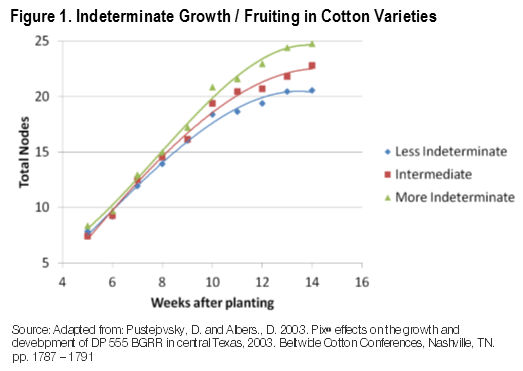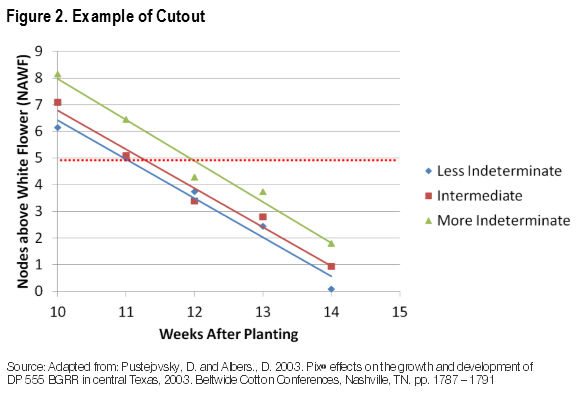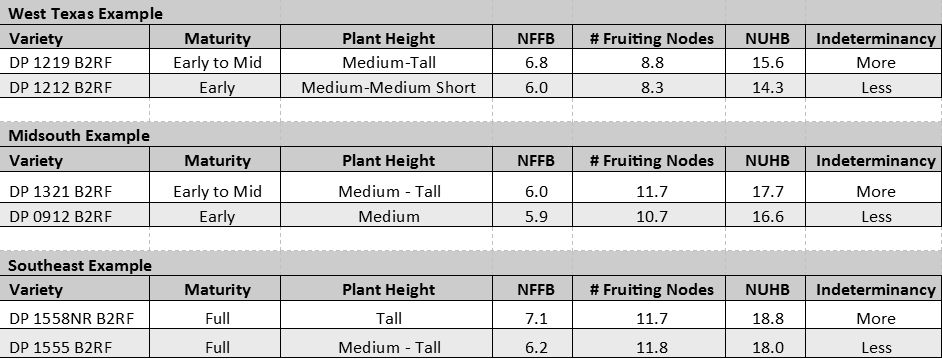3 MIN READ
Identifying and Managing Indeterminate Growth in Cotton
April 16, 2015
- All cotton plants are perennial, with an indeterminate growth habit.
- Within each maturity grouping, some varieties exhibit more indeterminate growth and fruiting.
- More indeterminate varieties may withstand stress better than less indeterminate varieties and can be placed in more stressful growing conditions.
- More indeterminate varieties may require more time and a greater level of plant growth regulator to control vegetative growth and maturity.
DEGREES OF INDETERMINACY
Cotton is a perennial plant with an indeterminate growth habit. However, cotton varieties have varying levels of indeterminacy. Indeterminacy can also be viewed as “strength of terminal growth” during the fruiting window (prior to cutout). Vegetative growth and fruiting occur concurrently in indeterminate varieties. Within each maturity grouping, some varieties exhibit more indeterminate growth and fruiting. Varieties with greater levels of indeterminacy may require more time and a greater level of a plant growth regulator (PGR) to control vegetative growth and maturity. Varieties with a less indeterminate nature are more responsive to PGR applications and may require less growth management.
VARIETY SELECTION
Cotton farmers may select varieties based primarily on yield potential rather than degree of indeterminacy. However, understanding the degree of indeterminacy of a variety can offer some benefits when placing and managing.
More indeterminate varieties will generally withstand stress better than less indeterminate varieties and can be placed in more stressful, tougher soils and growing conditions. More indeterminate varieties can sustain terminal growth and fill the canopy better than earlier maturing varieties. These varieties will continue to make nodes and produce fruit even during periods of stress. Less indeterminate varieties fruit faster and are typically best suited to more productive soils and more intensive management (irrigation, PGRs, fertility). While node counts may be similar prior to bloom, more indeterminate varieties sustain the rate of node development after bloom, while the less indeterminate type begins to slow terminal node development much quicker, moving more quickly to cutout (Figure 1).
110330090101


